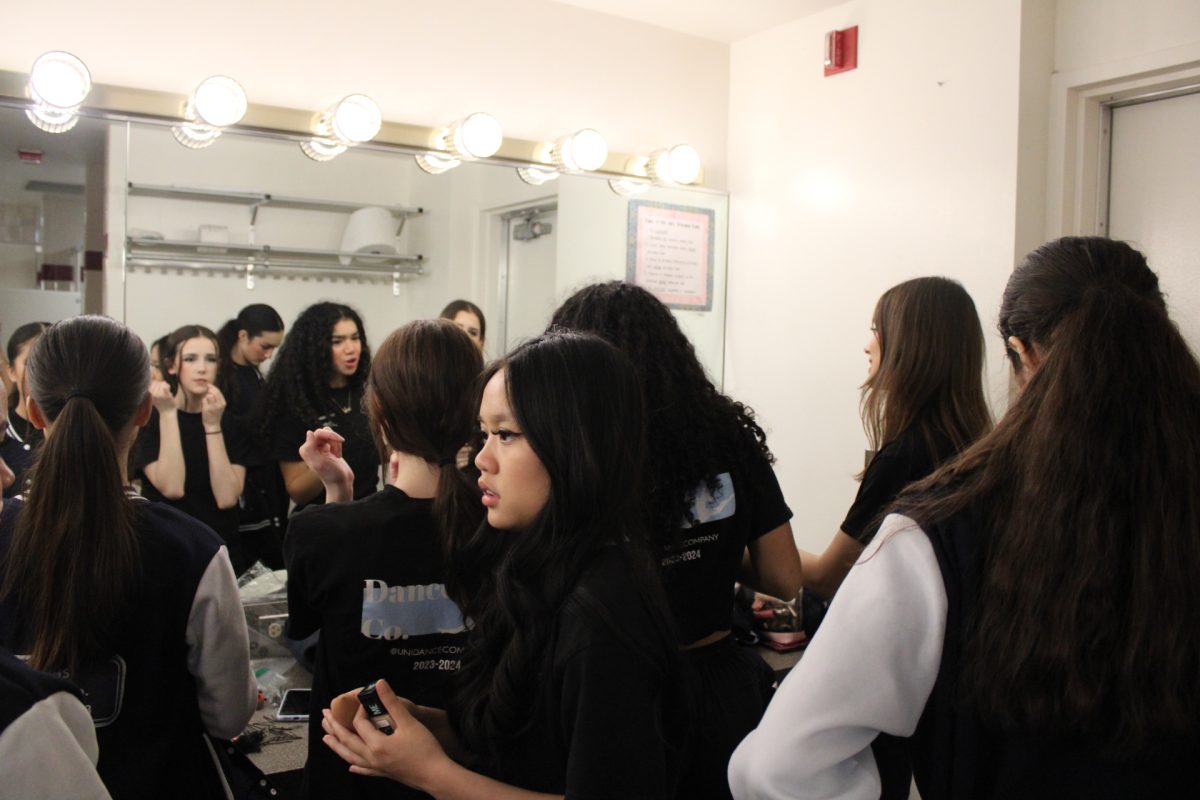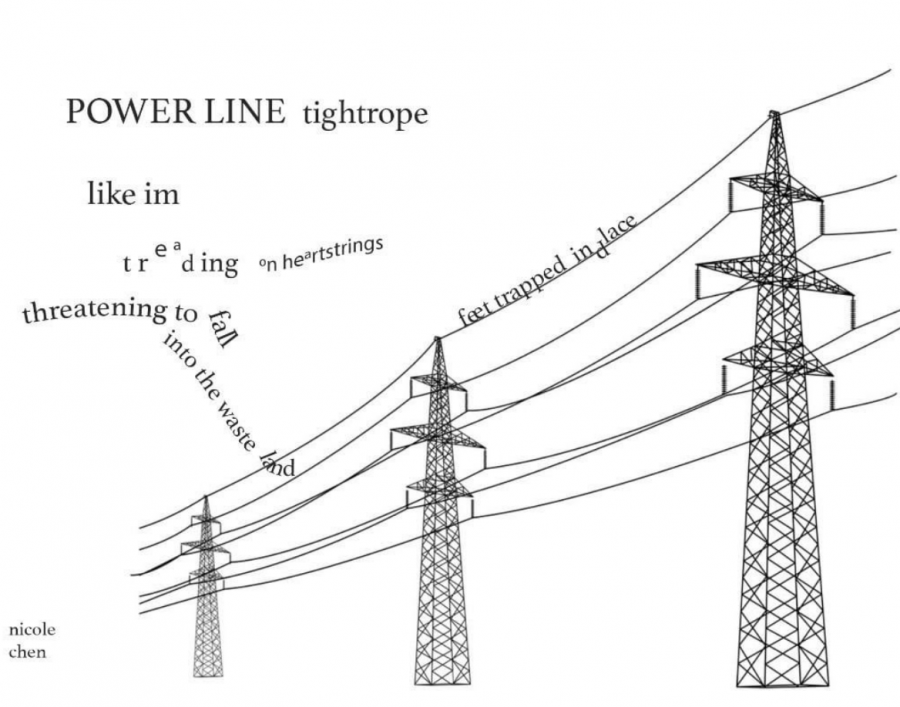

Toys ‘R Us has two separate categories for boys’ and girls’ toys. The boys’ toys include complex building sets for machinery such as airplanes, space centers and trucks. On the other hand, the girls’ toys include dolls and fake beauty accessories. While there are building sets for girls, they are much simpler and are used to build pink beach houses, playgrounds, parties and fashion runways.
Although this seems like just a fact of society, this type of split between the male and female genders extends from childhood to school to professional life.
Boys are commonly expected to be better at math and science than girls while girls typically turn to the humanities. This trend is shown in the statistics in enrollment at University High School’s (UHS) higher level science, technology, engineering and mathematics (STEM) classes. Generally, there are more boys enrolled than girls, but three classes are especially bad. In AP Physics, there are 43 girls to 83 boys; in AP Environmental Science, there are 25 to 48; and in AP Computer Science, there are a mere 16 to 53. Similar trends are observed in high schools across the nation and continue into college and the working world.
“I have definitely noticed a similar male-domination in higher level mathematics classes at the college level. First off, there just tend to be more males than females in upper division college mathematics courses I have taught,” said Sarah Eichorn, a math professor at UCI. “This trend does seem to continue on up into the working world. Just looking at the faculty members of the mathematics department at UC Irvine, there are considerably more male than female math professors. This distribution is similar at most universities and with mathematicians working in industry.”
Does this gap in participation reflect difference in skill? Students and teachers believe not, at least at UHS.
At UHS, students and teachers do not notice a difference in skill between males and females. Catherine Myong (Sr.) said, “With these kinds of ratios you’re bound to reconsider the notion that women tend to be more advanced in language skills while men tend to be more skilled in mathematical thinking. But regardless of how true these stereotypes are, I think it doesn’t really matter at this academic level. At least in my AP Physics class, it’s not like most of the males have better grades than the females, so I don’t think it’s really a matter of skill.”
“As far as I see it, I don’t really notice a gap in skill [in my AP Calculus BC class]. I’d probably go so far as to assume that the girls are achieving more, but that’s just a baseless guess. The girls seem more studious and focused,” said James Gui (So.)
Ms. Shannon Lenert (Math Dept.) said, “I do not feel that there is a gap in achievement at this level of mathematics. In fact, some of my most intuitive math thinkers have been female. I find the girls less likely to get involved in math competitions than the boys, but I think females tend to be more intrinsically driven and don’t seek the outside affirmation.”
In regards to the gender equality among teachers, Ms. Lenert said, “We have more female math teachers than male teachers. This year, I am co-chair with Mr. Eric Shulman (Math Dept.), so there’s equity in that sense. However, I do see a difference in the outside perception from students and parents; I think that they feel the male teacher is going to be stronger in math than the female teacher. We have really great female and male teachers in our department. The upper level classes are taught by both female and male teachers, and the success rate is equal for both genders.”
Although performance seems about equal at UHS, overall performance in the U.S. is not nearly as balanced. The U.S. has one of the largest gaps in performance in math test results from the Program of International Student Assessment (PISA) between 15-year-old boys and girls in both science and math.
However, this difference in skill is not believed to have a genetic cause. In a number of other countries, including the highest scoring countries (Finland, South Korea and Japan), girls either matched or outperformed boys in science and math. Furthermore, studies have shown that there is little difference in math aptitude before age seven, even in the U.S. This suggests that the shift in math performance is affected by societal issues.
Eichorn said, “I believe I read somewhere that U.S. boy/girl math performance is equal, or lead by girls, for the early school years and then at some point around middle school, this shifts. If that is true, I would say that points to looking at the instructional methods and motivational techniques used in schools. Boys tend to be more competitive than girls, so emphasis of competition within math instruction can tend to promote the boys’ interest over the girls’.”
The U.S. Department of Education found that girls “who have a strong self-concept regarding their abilities in math or science are more likely to choose and perform well in elective math and science courses and to select math and science-related college majors and careers” and that “improving girls’ beliefs about their abilities could alter their choices and performance … particularly as they move out of elementary school and into middle and high school.”
This internalization may be influenced by several factors of society, including previously set stereotypes and earlier restrictions in society.
Kathy Flores (So.) said, “If we’re looking at this issue from a historical perspective and a societal perspective, men have been and are often still expected to be the ones to provide for their families. Historically, women of stature were expected to be good hosts and cultured in literature and poetry and more than anything, trophies.”
Although there has definitely been progress in gender equality, earlier stereotypes and ideas of the role of women in society still affect our society today.
The lack of women role models, whether in the family or in STEM fields, may also contribute to lack of female participation.
Perhaps stereotypes play into the type of influence family members give to students. Ms. Lenert said, “I still (to my dismay) hear girls being told it’s ok if they don’t like math because their mom never ‘got it’ either, but boys tell me that their dad wants them to study math to get a better paying job. Perhaps there’s still the generalization in our society that men should make more money than women and they need to follow the science, math, technology track to support their family.”
Even the division between children’s toys may have affected the fields that each gender chooses.
There have been movements recently to create toys to encourage interest in science and math among young girls. Eichorn said, “I recently saw an interesting commercial for a new toy called Goldieblox. It was suggesting that traditional girls’ toys do not encourage their interest in science and engineering the way boys’ toys do. I agree with their assessment and think there are differences in the ways boys and girls and encouraged to play from a young age and may influence their choice of academic interests later on in their lives.”
But why does this gender gap even matter? According to the White House’s Office of Science and Technology Policy, women working in STEM fields earn 33% more than women in other fields. If more women take jobs in STEM fields, the wage gap between men and women could be reduced. Currently, women make only 77 cents to every dollar a man makes and women are the majority in the 10 most common jobs that pay under $10.10.
However, women in STEM fields at the moment are hugely outnumbered. Girls are often steered away from the sciences starting from a young age, resulting in a gender gap in not only participation, but also perceived skill and capability.
“I think the solution would be to stop factoring gender into our treatment of students/classmates. Don’t treat a girl who is incredibly good at computer science like some amazing rare species, as if she wasn’t supposed to be able to do that,” said Suzanne Chen (Sr.) “Capability doesn’t come from gender. It comes in large part from our perseverance, our passion and our creativity.”
By ELYSIA OUYANG
Staff Writer



Sword & Shield
Menu
Gender imbalance in STEM classes
January 29, 2014
Story continues below advertisement
View Comments (1)
Donate to Sword & Shield
$55
$1000
Contributed
Our Goal
Your donation will support the student journalists of University High School. Your contribution will allow us to purchase equipment and cover our annual website hosting costs.
More to Discover
The Official News Publication of University High School in Irvine, California













cjillustrates • Jan 29, 2014 at 4:18 am
Reblogged this on STEMulate. Illustrate. and commented:
In order to change these finding drastic measures are needed in the education of our youth. This is why I am seeking efforts to create children’s books that encourage the minority population to get involved and have fun with STEM subjects.